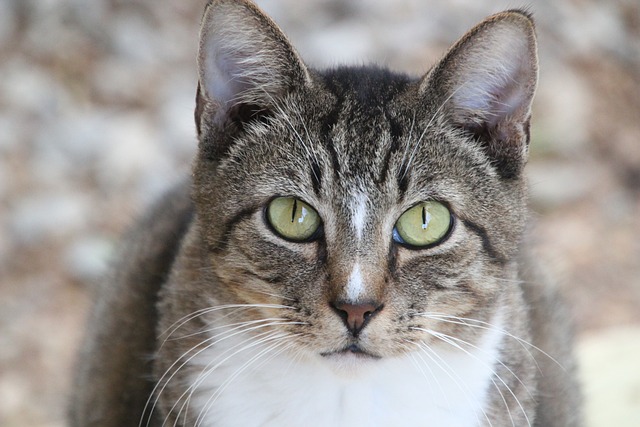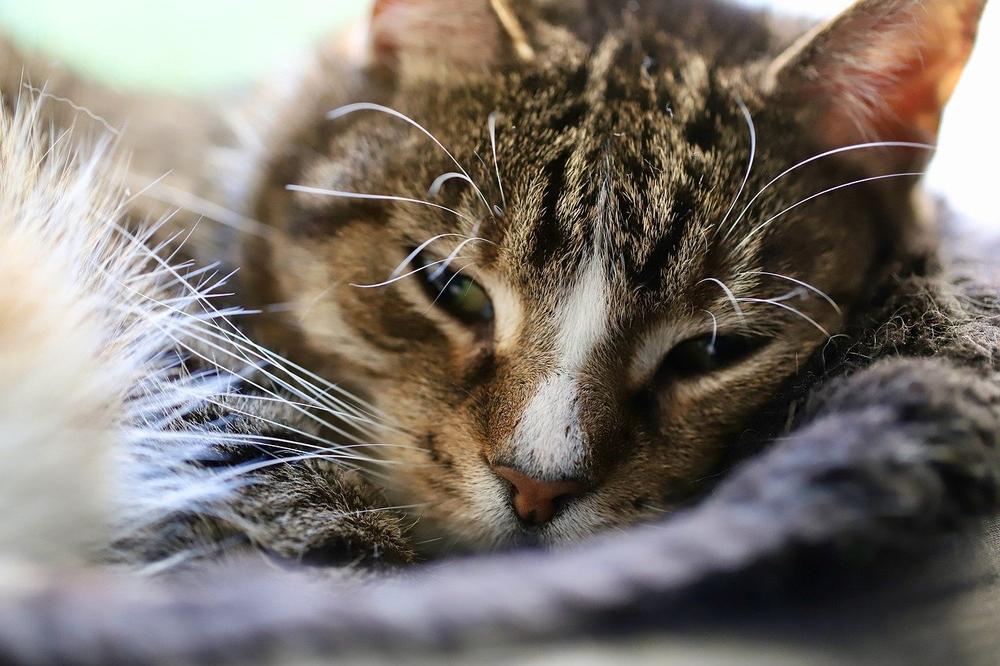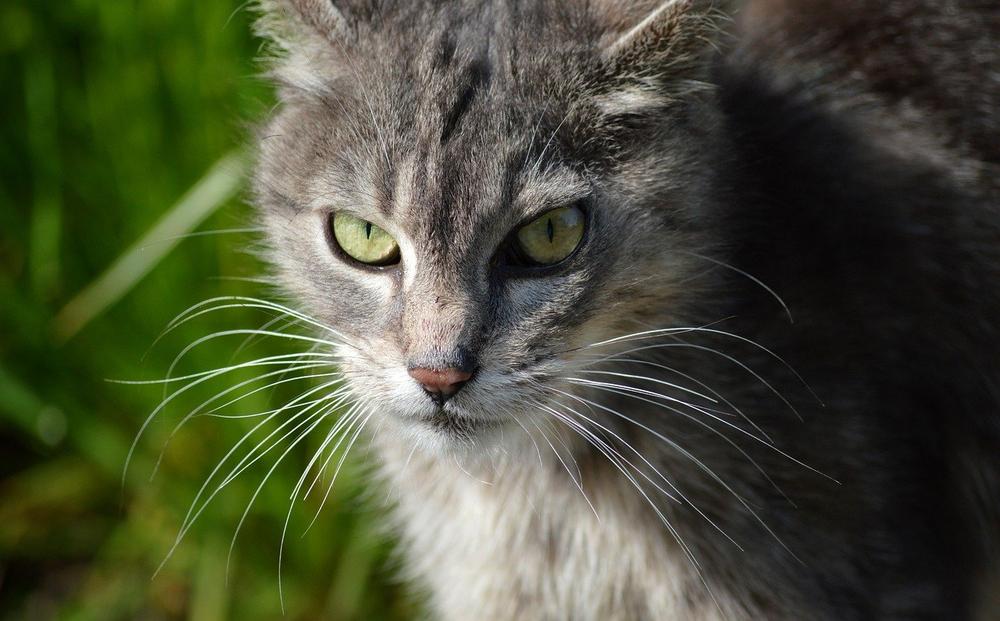Why Do Some Cats Have Eyebrow Whiskers?

Ever wondered why some cats have those adorable little eyebrow whiskers while others seem to have missed the memo?
Don't worry, you're not alone in your quest for feline follicle knowledge. 😺
Let's dive in and unravel this mystical mystery together, shall we?
The Purpose of Eyebrow Whiskers in Cats
Did you know that eyebrow whiskers in cats serve more purposes than you might think?
These amazing little whiskers have several vital uses for our feline friends.
They help cats determine if they can fit through tight spots and squeeze into hiding places - that's right, cats have built-in measuring tools!
These whiskers also enhance cats' sensory abilities by detecting movement and protecting their eyes.
When something touches or gets too close to their eyebrows, cats blink as a protective reflex.
It's like having an early warning system.
In fact, these whiskers provide cats with crucial spatial information and contribute to an additional sense called proprioception.

With these whiskers, cats can accurately analyze their environment and be fully aware of their surroundings. But wait, there's more. Eyebrow whiskers protect cats' eyes!
They act as sensitive radars and vital tools against debris and potential eye injuries.
Whiskers aren't just practical, though.
Cats use them to communicate various emotions.
Depending on the position of their whiskers, cats can express curiosity, anxiety, threat, relaxation, or hunting behavior. It's like a feline mood ring!
And here's something truly remarkable:
Kittens hugely rely on their whiskers as they develop and evolve.
Since they're born deaf and blind, whiskers become their lifeline for exploring and understanding their surroundings.
So, the next time you see a cat's eyebrow whiskers twitching or flexing, remember they're doing so much more than just looking cute!
Main points I'll expand upon further down this article:
- Whiskers are sensory hairs that help cats sense changes in the air.
- Cats have the largest concentration of whiskers around their mouth.
- Whiskers serve as a messaging system, sending signals to the cat's brain.
- Whiskers can indicate a cat's mood, reflecting interest, threat, or comfort.
- Some cats have eyebrow whiskers, while others do not.
- Sphynx cats lack both whiskers and eyebrows.
- Certain breeds may have big bushy brows.
- Cutting a cat's whiskers can alter their perception and cause stress.
- Whiskers provide a sense of safety and orientation for cats.
- Whiskers can be sensitive and may need special considerations in feeding.
What Are Whiskers?
Whiskers, or vibrissae, are specialized hairs found on cats that serve as precise sensors. Connected to proprioceptors, they detect subtle changes in the environment, like airflow, and send signals to a cat's brain. These powerful communicators are not just cute, but essential for a cat's perception.
Well, whiskers are these long and mystical hairs that cats sport.
They're not just there for show, though.
These suckers are serious business.
You see, whiskers, also known as vibrissae, serve as a super precise measuring tool for our feline friends.
Yep, every little movement in the air gets noticed thanks to these babies.
And guess what?
They’ve got deep roots connected to proprioceptors. Don't worry if you don't know what that means, it's just a fancy word for sensors that help cats sense stuff.

They can detect even the most subtle changes in the environment, like airflow.
Now, cats have about 24 whiskers in total—split into 12 on each side of their fuzzy little heads. The highest concentration is around their mouth, but whiskers can be found in other places too.
Think eyebrows, upper lip, back of front legs, even the nose!
It's like these whiskers are sending secret messages that only cats can understand.
When touched or moved, they do just that:
Send signals to a cat's brain.
So, next time you quietly observe your furry friend, remember those whiskers aren't just cute—they're powerful communicators!
And here's something fascinating about whiskers...
While most cats have them, there are some unique breeds like the Sphynx that lack eyebrow whiskers entirely due to genetic variations!
Eyebrows and Whiskers: Cat Breeds and Facial Features
Most cat breeds have eyebrow whiskers, while some, like the Sphynx, have none due to genetics.

The presence or absence of these whiskers can differ among cats, so it's common for you to notice your own cat's eyebrows.
But don't worry, the lack of eyebrow whiskers in the Sphynx doesn't affect their sensory abilities much.
The number of whiskers can vary too. Usually, there are about three above each eye. Certain breeds, like Maine Coon, Ragdoll, and Persian, might even flaunt big bushy brows.
How to Keep Your Cat’s Whiskers Healthy
You gotta take care of your cat's whiskers, buddy. 😺

It's real important for their well-being, ya know?
Here's some tips to ensure those fuzzy little whiskers stay in tip-top shape:
- Don't go cutting or trimming those whiskers, my friend. It messes with their sense of space and can really throw 'em off.
- Get 'em a nice big food bowl that's wide and shallow. If it's too deep or narrow, their whiskers will brush against the sides and it ain't too comfortable for 'em.
- Skip the bowl altogether and give 'em a plate for eating instead. It'll help with any sensitivity in their whiskers and keep their appetite goin'.
- Make sure they always have a full water bowl accessible, so they don't have to strain their whiskers by bending down low for a drink.
- If you see any damage to their whiskers, don't be pluckin' or pullin' on 'em. They usually grow back in about one to two months, no problemo.
- Keep an eye on the color of their whiskers, too. They might start off white but as your cat gets older, they could darken up to a dark gray or black.
Those whiskers are more than just a fashion statement, my friend. They're essential for your kitty's safety and orientation.
So, be mindful of those whiskers and keep your furry pal happy and healthy, yeah?
And that wraps up today's article.
Before you leave, can I ask you something? Did my blog post help you out? If it did, it would mean a lot to me if you could share it with your friends and family. You just need to click on any of the social media sharing icons to instantly spread the word. Thank you so much!
Talk soon,
-Sarah Davis